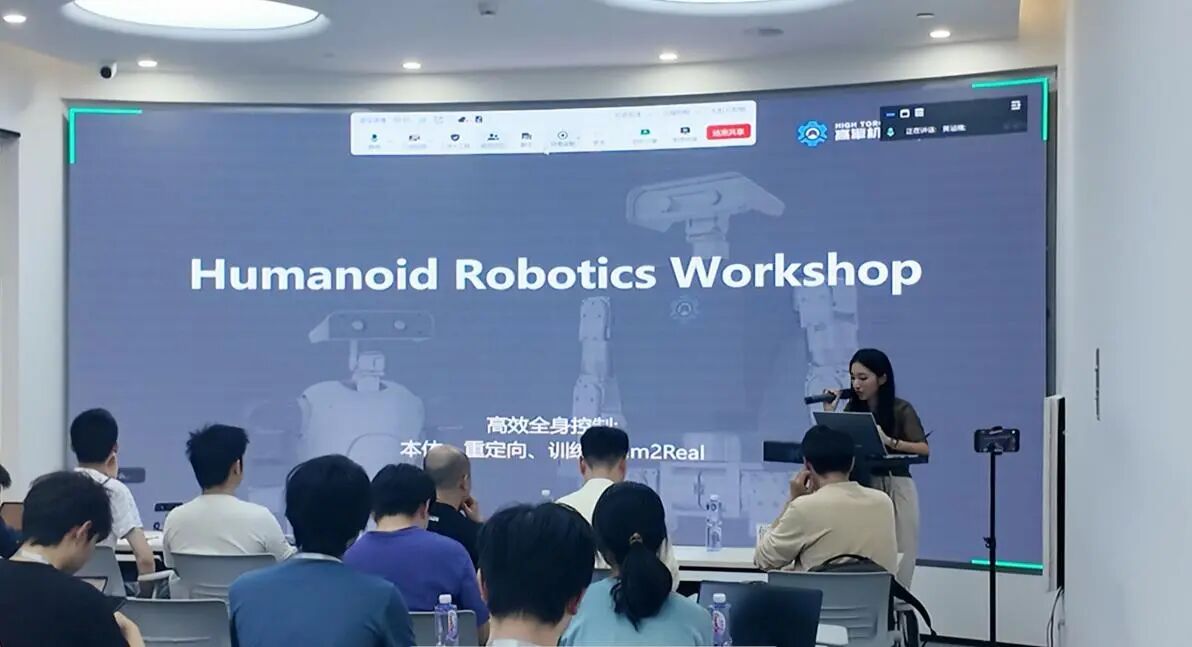► Event Background and Objectives

“Humanoid Robotics Workshop” Kicks Off

Dr. Yanjie Ze Shares GMR Research

GMR Pipeline


Ziang Zheng Explains TrackerLab: A Modular Whole-Body Control Package Based on Trajectory Priors

TrackerLab Core Features

Dr. Zhuang Ziwen's Introduction to Intelligent Motion Control Systems

Sim2Real Layer Comparison
Zhang Xiaobai, Founder & CEO of HighTorque Robotics, shared insights on "Humanoid Robot Body Design," with a core vision of "enabling every developer to own a humanoid robot." The focus is on launching two compact and cost-effective hardware products: the 60cm Mini Pi+ and the 80cm Mini Hi.
The compact design of models like the Pi+ allows for single-person debugging, significantly reducing safety risks during motion testing and directly addressing the complexities and high risks associated with larger robots. The body design consistently adheres to the core principle that "performance, efficiency, cost, and safety are all indispensable," balancing both research and practical development needs.

HighTorque's High-Performance Joint Modules

High Torque's Integrated Robot Solutions & Control Modules

HighTorque Robotics CEO Zhang Xiaobai's Practical Insights

The roundtable exchange proceeded successfully.
The Humanoid Robotics Workshop, centered on "Efficient Whole-Body Control," facilitated an end-to-end exchange from algorithmic exploration to engineering implementation through four in-depth technical sessions and one roundtable discussion. Moving forward, HighTorque Robotics will continue to open its hardware platforms and technical communication channels, collaborating with more developers to advance humanoid robots from laboratories to commercial applications. We strive to achieve the goal of "enabling every developer to own a humanoid robot" and propel the industry toward the next phase of "closed-loop motion and perception."
In the future, HighTorque Robotics will host more academic and developer exchange events. Beyond providing reliable hardware, we are committed to building a robust ecosystem platform for academic and development collaboration. Scholars and developers interested in cooperation and exchange are welcome to contact us via WeChat: dionysuslearning.

